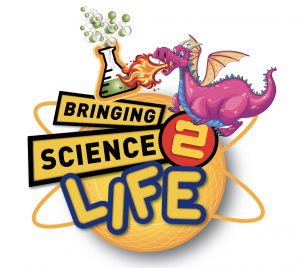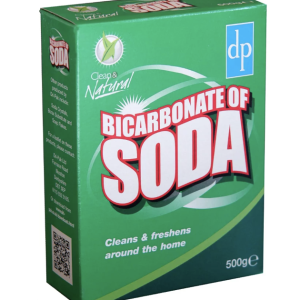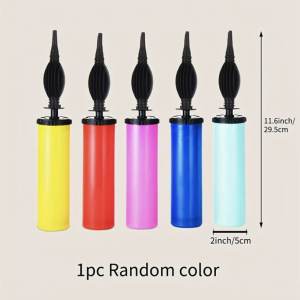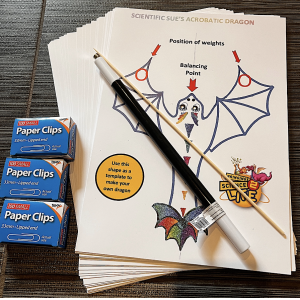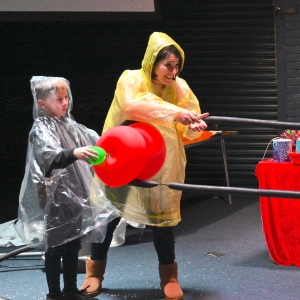Description
Pilot FriXion Colours Erasable Felt Tip Pen Wallet
Change the end of the story with FriXion Colors, the erasable colouring pen from Pilot.
Using FriXion Colors you can let your creativity run free to draw and colour. If you don’t like the direction it’s heading, simply erase your mistakes with the attached eraser stud and start again.
The unique ink responds to heat generated by rubbing with the eraser and goes clear, allowing you to colour over again (or leave blank if you have cleaned up where you strayed over the lines).
Perfect for all ages and with a number of practical everyday uses, FriXion Colors is much more than just a felt-tip colouring pen. As well as drawing and colouring, FriXion Colors is also perfect for marking up notes or reference points in textbooks and is a great solution for temporarily marking on fabrics and for making secret messages!
The 2.5mm polyester fibre tip gives a 0.69mm colouring stroke.
- Ink Colour : Assorted colours
- Writing width : 0.63 mm
- Tip size : 2.50 mm
A little bit of Science
Scientific Sue uses these pens in her Virtual Science of Dragons Show!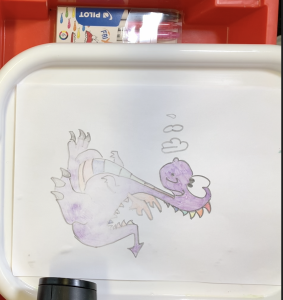
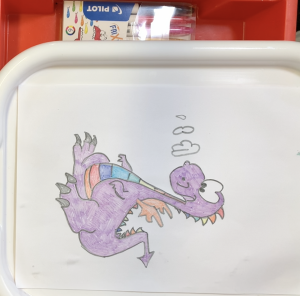
The secret behind the magic is in Pilot’s proprietary thermochromic ink. The ink uses three types of chemical compounds that rely on:
- acid-base and temperature sensitivity:
- special types of dye that change colour upon reaction with acids;
- compounds that act as acids to produce the colour change; and
- compounds that regulate the temperature at which the colour transition will take place.
Thermochromic inks are heat sensitive and become semi-transparent and are mainly used to reveal a printed message hidden underneath the ink when a temperature change occurs. The most common heat reactive ink is used to reveal a message by heating it up, usually by rubbing. This is the ink in the FriXion pens.
The dyes are called leucodyes and they are chemicals that change colour when heat energy makes their molecules shift back and forth between two subtly different structures – known as the leuco (colourless) and the non-leuco (coloured) forms. The leuco and no-leuco forms absorb and reflect light different, so appear very different colours when printed on a material such as paper or cotton.
In the show Sue uses a hairdryer to make her colourful dragon disappear. The Dragon will reappear again if you cool it down. Place it in the freezer or…. book the show and find out how Scientific Sue does it!
Smart Colours
Devi Stuart-Fox, an Australian scientist has, as a result of her studies of the colour in lizards and birds, shown that the remarkable ability of chameleons to change colour evolved not as camouflage, but as a social and territorial display. She has also found out that bearded dragons change colour in response to heat – they are thermochromic. Many of your children will have seen thermochromic mugs, ask them to think about how materials which change colour due to a difference in heat could be used in the home.
As a result of Devi’s studies other scientists are now developing bandages, smart bandages, that change colour in response to slight changes in the temperature of the wound.
Scientists have invented colour-changing bowls and spoons which let parents know if the food for babies is too hot plus toys which change colour in the bath indicating the waters’ temperature.
Children may also have seen the colour changing thermometers which are placed on the forehead.
Everyone’s heard the phrase “red hot,” but what does it actually mean? If you heat an iron bar in a furnace, you’ll see it slowly changes colour from its original gray-black (at about 600°C) to red hot (~950°C), yellow hot (~1100°C), and then white hot (at higher temperatures still). The hotter it gets; the more energy it contains. As the fire pumps energy into the iron, the irons’ atoms become “excited” and unstable, and their electrons absorb the energy briefly, then hurl it back out again in the form of light particles known as photons. That’s generally why hot things change colour—and why their colour changes (from red to white) as they get hotter and spew out different kinds of light energy. It’s an example of what’s called incandescence, where heat energy is constantly converted to light energy.
Thermochromic materials change colour at much lower temperatures and for very different reasons that have nothing to do with incandescence. There are two main types of materials that are widely used to produce thermochromic effects. Some use liquid crystals (the materials from which your computer or mobile phone display is most likely made); others use organic (carbon-based) dyes known as leuco dyes the dyes used in the FriXion pens.
Sometimes we want things to change colour as they get hotter or colder just for novelty or entertainment.
Or maybe you have a T-shirt or a poster that changes colour when you touch it?
